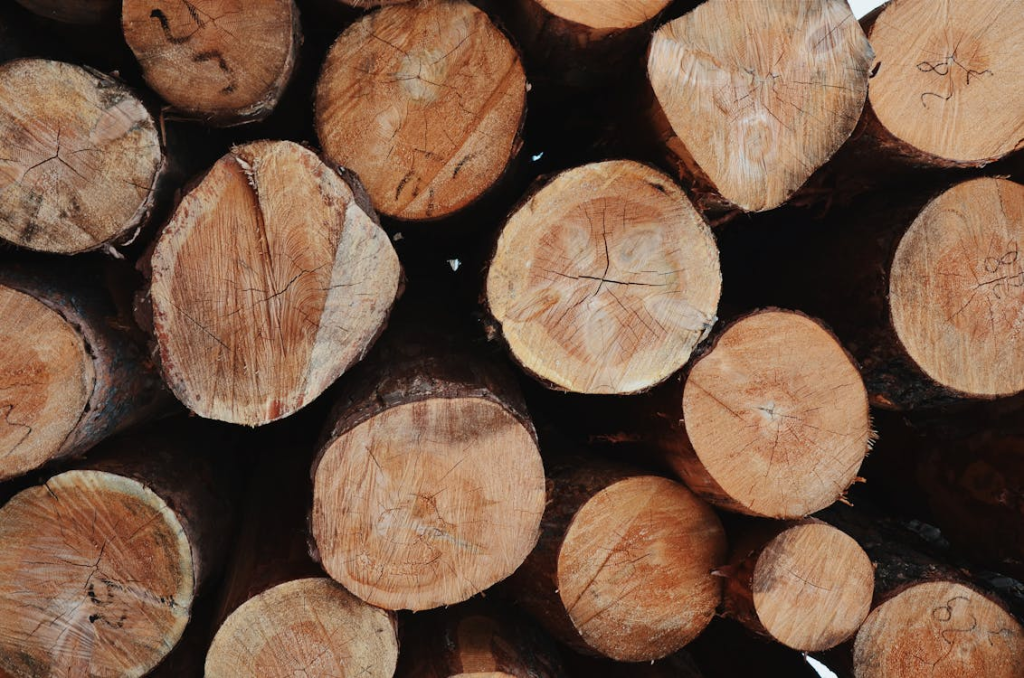Purchasing timber is a significant investment, and making informed decisions makes sure you get the best value for your money. Whether you’re in construction, furniture manufacturing, or any other industry that relies on wood, understanding key factors like quality, sourcing, pricing, and sustainability is important. The timber market is vast, with various species, grades, treatments, and certifications, all of which affect the final product’s cost and performance. Failing to assess these aspects properly can lead to increased expenses, poor-quality materials, or even legal and environmental complications. To avoid these pitfalls, you need a strategic approach to timber purchasing that considers not just cost but long-term durability, compliance with regulations, and supply chain reliability.
Sustainable Sourcing and Certification
Sustainable timber sourcing is more than just an ethical choice – it can also protect your business from legal issues and reputational damage. Certifications like the Forest Stewardship Council (FSC) and the Programme for the Endorsement of Forest Certification (PEFC) make sure the wood comes from responsibly managed forests. Using Certified Sustainable Wood or other responsibly sourced materials not only supports environmental conservation but also increases your business’s credibility and compliance with industry standards. Some regions enforce strict regulations on timber imports to combat illegal logging. Making sure your suppliers provide legally harvested and certified wood reduces the risk of supply chain disruptions and potential penalties. When evaluating suppliers, request documentation proving the timber’s origins and compliance with environmental standards.
Understanding Timber Grades and Quality
Timber is categorized into different grades based on strength, appearance, and intended use. Structural timber, for example, must meet specific load-bearing standards, while appearance-grade timber is selected for its visual appeal. Understanding the grading system helps you choose the right type for your needs without overpaying for unnecessary quality or, worse, underestimating your project’s requirements. Moisture content plays an important role in timber quality. Green timber contains high moisture levels and may warp or shrink after installation, while kiln-dried timber has been processed to stabilize its dimensions. Inspecting the wood for defects such as knots, cracks, or insect damage makes sure you receive durable material that meets your project’s demands.
Choosing the Right Timber Species
Different wood species offer varying levels of durability, strength, and resistance to environmental factors. Hardwoods like oak, mahogany, and teak are known for their toughness and longevity, making them ideal for furniture and high-end construction projects. Softwoods, such as pine and spruce, are more affordable and widely used in framing and general construction. If your project involves outdoor applications, selecting a naturally durable or pressure-treated species is important to prevent decay and insect damage. The choice of timber species also affects workability – some woods are easier to cut, shape, and finish than others. Think about the balance between cost, durability, and ease of use when selecting timber for your business.
Pricing and Market Fluctuations
Timber prices are influenced by supply and demand, global trade policies, and environmental factors such as wildfires and deforestation. Seasonal fluctuations can also affect costs, with higher prices often occurring during peak construction periods. To manage expenses effectively, monitor market trends, and think about bulk purchasing during low-demand seasons. Choosing a reliable supplier with consistent pricing can help you avoid unexpected cost increases. Hidden costs, such as transportation, storage, and waste disposal, should also be factored into your budget. By planning and negotiating favorable terms with suppliers, you can optimize costs without compromising on quality.
Treatment and Preservation Methods
Timber is susceptible to pests, fungi, and moisture-related damage, making treatment important for long-term performance. Pressure-treated wood, infused with preservatives, resists decay and insect infestation, making it ideal for outdoor and structural applications. Other treatments include kiln drying, which reduces moisture content and minimizes shrinkage, and fire-retardant treatments for increased safety in construction projects. Some treatments can alter the color and texture of wood, so think about their aesthetic impact if appearance is a priority. Be aware of environmental and health regulations concerning certain chemical treatments, as some preservatives contain hazardous substances that require careful handling. Choosing the right treatment makes sure your timber remains strong and durable for years to come.
Supplier Reliability and Logistics
Working with a reputable timber supplier is critical to securing consistent quality and timely deliveries. Look for suppliers with a track record of reliability, positive customer reviews, and transparent sourcing practices. Visiting their facilities or requesting samples can provide insights into their quality standards. Logistics also play a major role in timber purchasing. Delayed shipments can stall projects, leading to financial losses and operational setbacks. Think about the supplier’s location, delivery times, and their ability to provide replacements if defects are found. Establishing long-term relationships with trustworthy suppliers can streamline procurement processes and help secure better pricing and priority service.
Compliance with Building Codes and Regulations
Different industries and regions have specific regulations governing the use of timber in construction and manufacturing. Securing compliance with local building codes, fire safety standards, and environmental laws is important to avoid legal complications. Some projects require specific wood treatments or species to meet regulatory requirements, even in areas prone to wildfires, termites, or high humidity. If your business exports timber products, international trade laws may impose restrictions on certain wood species. Working with compliance experts or legal consultants can help you understand these regulations, making sure your business operates within legal boundaries while maintaining high-quality standards.
Evaluating Long-Term Investment Value
Beyond the initial purchase price, think about the long-term value of your timber investment. High-quality, durable wood may have a higher upfront cost but can reduce maintenance and replacement expenses over time. Sustainable and certified timber can increase your brand’s reputation, attracting eco-conscious customers and investors. If timber is a core part of your business operations, implementing a strategic sourcing plan can lead to significant cost savings and operational efficiencies. Investing in quality assurance processes, such as periodic inspections and supplier audits, ensures that you consistently receive the best materials. Viewing timber purchasing as a long-term investment rather than just a short-term expense helps maximize value and business growth.

Purchasing timber requires more than just comparing prices – it demands a thorough understanding of quality, sustainability, market dynamics, and compliance requirements. By selecting the right timber grades, species, and treatments, you secure durability and performance while optimizing costs. Working with reliable suppliers and staying informed about regulations and certifications minimizes risks and increases supply chain stability. Evaluating timber as a long-term investment rather than a one-time purchase leads to better financial and operational outcomes. Making informed decisions in timber procurement not only maximizes value but also makes sure your business remains competitive and resilient in an ever-evolving market.

